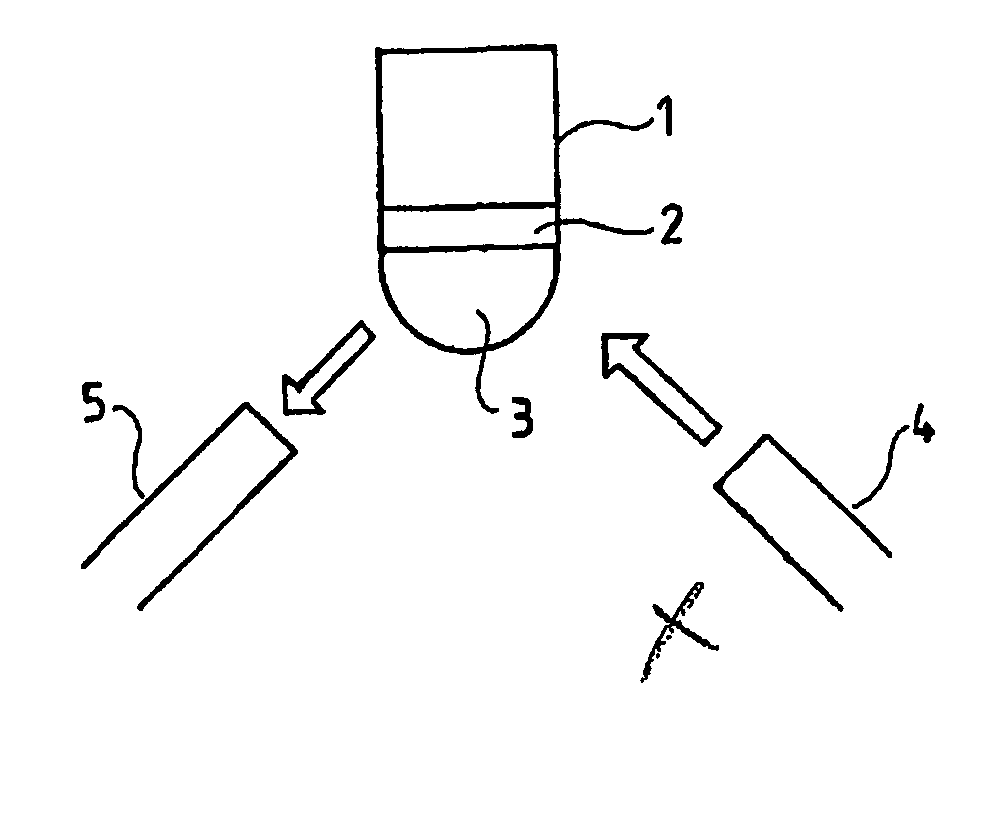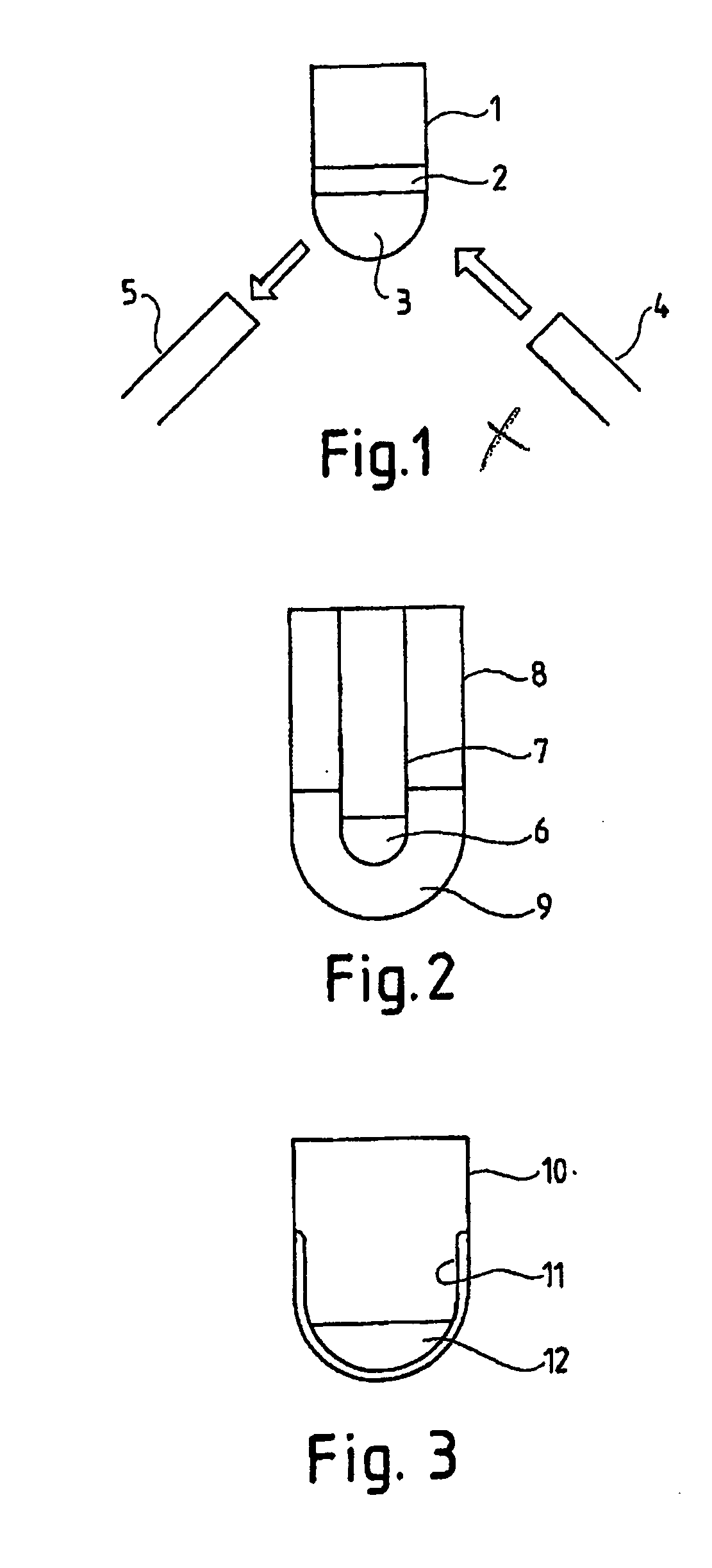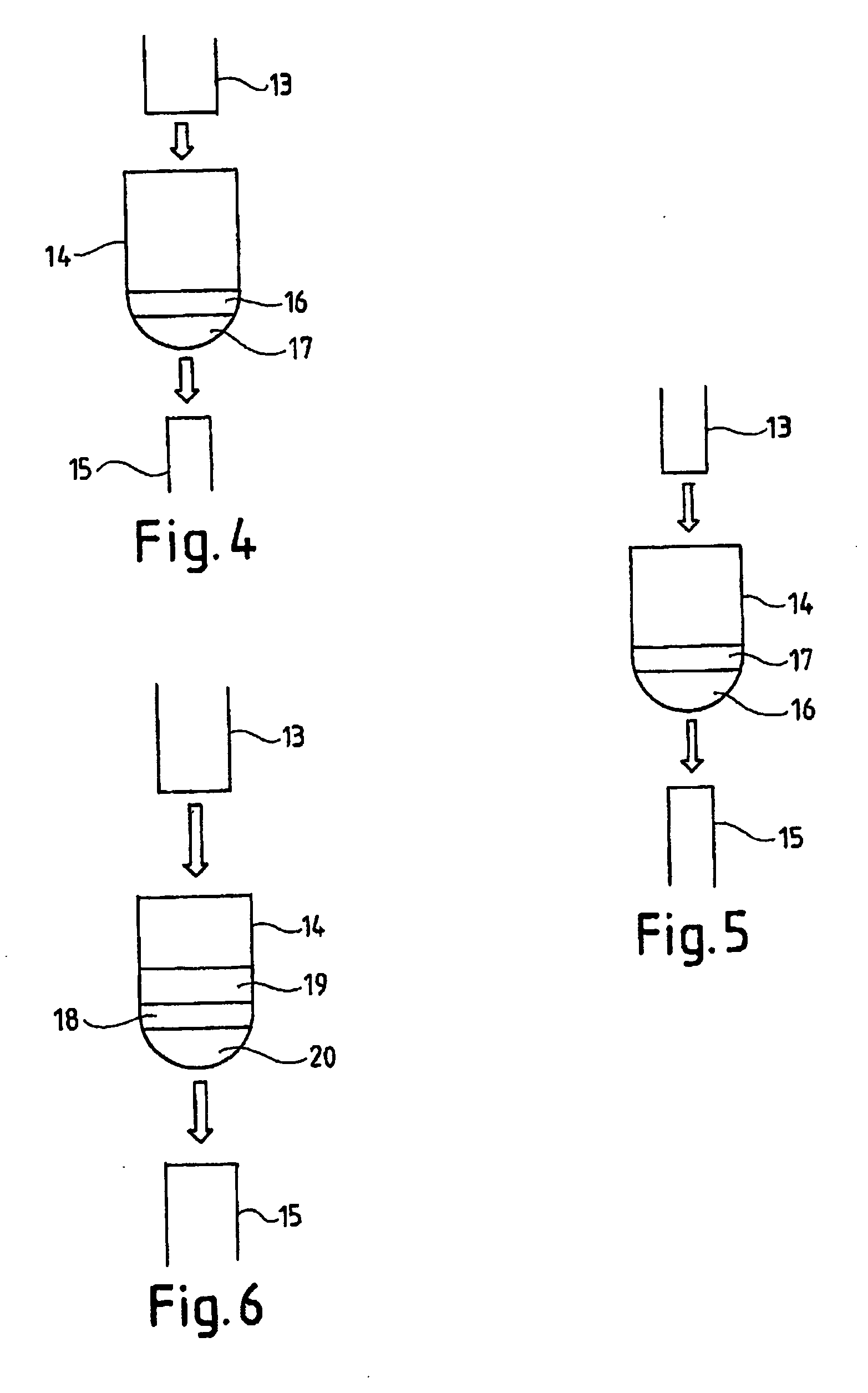Optical means for calibrating temperature
a technology of optical means and temperature, applied in the direction of instruments, heat measurement, analysis using chemical indicators, etc., can solve the problems of difficult to accurately measure the temperature of a reaction mixture, difficult to achieve with a degree celsius accuracy, and not always easy to monitor the temperature of process microenvironments. to achieve the effect of being easily detectabl
- Summary
- Abstract
- Description
- Claims
- Application Information
AI Technical Summary
Benefits of technology
Problems solved by technology
Method used
Image
Examples
Embodiment Construction
[0048] With reference to FIG. 1, there is shown a transparent vial 1 having therein a liquid luminophore-containing component 2 layered over a TLC component 3. The system comprising components 2 and 3 is irradiated by light source 4 and any luminescence emitted by component 2 detected by detector 5.
[0049] In FIG. 1, in the case where TLC 3 is a clearing point TLC, the system operates as follows. At temperatures below its transition temperature, TLC 3 will significantly block excitation of luminophore 2. At those temperatures, TLC 3 will also significantly block light emitted by luminophore 2 from reaching light detector 5. Conversely, at temperatures above the TLC's transition temperature, when the TLC is mostly clear, light source 4 will excite luminophore 2, and the emitted luminescence detected at detector 5. At the TLC's transition temperature, a small change in temperature will therefore result in a large change in detected luminescence. With a clearing point TLC, the system i...
PUM
| Property | Measurement | Unit |
|---|---|---|
| temperature | aaaaa | aaaaa |
| wavelengths | aaaaa | aaaaa |
| sensitive wavelength band | aaaaa | aaaaa |
Abstract
Description
Claims
Application Information
 Login to View More
Login to View More - R&D
- Intellectual Property
- Life Sciences
- Materials
- Tech Scout
- Unparalleled Data Quality
- Higher Quality Content
- 60% Fewer Hallucinations
Browse by: Latest US Patents, China's latest patents, Technical Efficacy Thesaurus, Application Domain, Technology Topic, Popular Technical Reports.
© 2025 PatSnap. All rights reserved.Legal|Privacy policy|Modern Slavery Act Transparency Statement|Sitemap|About US| Contact US: help@patsnap.com



